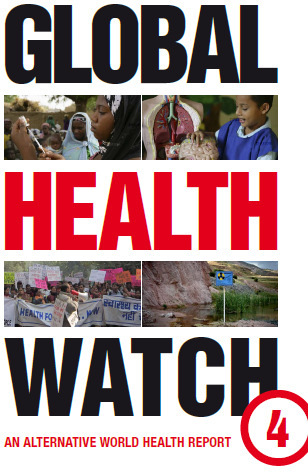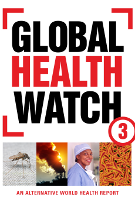Follow-up of the report of the Consultative Expert Working Group on Research and Development: Financing and Coordination
PHM Comments pre EB
This is a report and a ‘summary of the proceedings’ of the Open Ended Member state meeting on the CEWG 26-28 November 2012, from the DG. After the release of the CEWG report in April 2012 and its recommendations, and the May 2012 resolution WHA65.22 for further regional and national consultations, the follow up was held in the ‘open-ended’ meeting 26-28 November 2012.
The draft resolution, achieved by consensus, urges member states to strengthen R&D capacities, increase investment in health R&D for diseases disproportionately affecting developing countries, promote capacity building, technology transfer and the production of health products in developing countries, to establish national health observatories to track and monitor information on health R&D, and to continue consultation. It also requests the DG to ‘develop norms and standards’ for classification of health R&D, to support member states, to establish a global health observatory within the WHO secretariat to ‘monitor and analyse relevant information on health R&D, building on national and regional observatories and existing data collecting mechanisms’ and to ‘explore and evaluate existing mechanisms for contributions to health R&D’.
It proposes the next open ended meeting in May 2016 as well as or the DG to ‘report on the review of existing coordination mechanisms, as well as on the evaluation of existing mechanisms for contributions to health R&D to the sixty – seventh WHA (through EB 134th), to report on the implementation of health R&D demonstration projects to the sixty-eight WHA (through EB 136th and to transmit the report of the open ended meeting of member states to the sixty ninth WHA in 2016.
The CEWG report represents a milestone in global efforts to address multiple problems inherent in the commercially driven biomedical health R&D system, including insufficient R&D for diseases predominantly affecting developing countries, unsustainable financing, fragmentation, and a lack of access to the outcomes of essential health R&D. These were identified over two decades ago in the 1990 Commission on Health Research for Development.
The CEWG report explicitly linked innovation in health R&D with the need for affordable access to the outcomes of this innovation. It linked the key elements of priorities, financing, coordination and access into a concerted global framework for health R&D into Type II and Type III diseases, and the specific needs of developing countries related to Type I diseases.
This draft resolution represents a minimalist piecemeal description of the CEWG recommendations. It does not reflect the clear link between priorities, financing, coordination and access. Nor does it conceive of the outcomes of publicly funded R&D as global public goods.
The CEWG has explored and evaluated the existing mechanisms – so the request to DG 4(6) to ‘explore and evaluate existing mechanisms’ insinuates that there was some dissatisfaction with the CEWG report.
A true summary of the ‘proceedings’ should also make reference to the points of contention – The US opposed a global treaty with minimum contribution levels, opposed a set amount of funding towards pooled funding mechanisms, and instead supported ideas such as voluntary funding, direct grants, AMCs and use of some prizes (aligned with the position of the multinational IFPMA). Canada also opposed an R&D convention. UK also opposed, favouring multilateral organisations and coordination mechanisms that would be faster. Argentina with other Latin American countries supported an R&D convention (with Suriname too) (see http://keionline.org/node/1612, http://keionline.org/node/1612) http://keionline.org/node/1551, http://www.doctorswithoutborders.org/press/release.cfm?id=6043
The draft resolution does not include access, equity or affordability in its urge to member states, nor in the request to DG.
We support the resolution statement of the need for transparent decision making processes (p12) but there should be explicit commitment to transparency of R&D funding flows, clinical trial data, costs of trials, subsidies for R&D, prices and revenues of new products, as well as transparent management of intellectual property rights including patent status, landscapes and license terms.
The outputs of publicly funded R&D should be considered global public goods and thus open management of IPR and sharing of knowledge should be used to ensure access and reduce prices.
KEI reporting on the 26-28th November meetings argues that the US and EU were against any action on the more substantive recommendation of the CEWG for an R&D treaty ‘until 2016’.
‘The report and proposed resolution are a huge disappointment for KEI and others who expected the WHO to begin work on an international agreement to provide sustainable funding for medical R&D in areas of priority , and to implement delinkage and open innovation models…. If the US and EU don’t think medical R&D is that important, they should stop making demands in trade agreements or expanded intellectual property protection for pharmaceutical drugs’ (http://keionline.org/node/1612).
MSF reporting on the resolution:
‘instead of pushing forward with a real plan to address the continued lack of suitable and affordable vaccines, drugs and diagnostics that our teams in the field face, all countries have really pledged is to continue observing the situation. Countries have substituted process for progress. After ten years of intergovernmental negotiations and several landmark expert reports with concrete proposals on how to fix an R&D system that fails to deliver, this is a triumph of political foot dragging and lack of leadership. (Michelle Childs – MSF response to outcome of WHO negotiations on medical R&D) (http://www.msfaccess.org/content/msf-response-outcome-who-negotiations-m...).
‘the outcome is deeply disappointing that will not help re-shape priorities, increase funding or catalyse development of urgently needed new medical tools; at best it will only underscore further how badly these actions are needed’ (Julien Potet and Katy Athersuch MSF)(http://blogs.plos.org/speakingofmedicine/2012/12/06/stuck-in-a-time-warp-who-brokered-global-rd-action-plan-shelved/)
Civil society OPEN LETTER to WHO member states at follow up meeting November 2012:
‘The last decade has seen the creation of a number of important initiatives to fill innovation gaps but these are ad hoc, fragmented and are not sustainable without significantly strengthened public leadership’.
‘An observatory will not provide adequate coordination, increase sustainable financing or result in new medical tools that are needed. If this is the only outcome to result from more than ten years of deliberations it would be woefully inadequate’ (http://www.msfaccess.org/content/open-letter-who-member-states-follow-me...).
EB DISCUSSION
Click above to see the summary of the EB discussion
- Login to post comments




